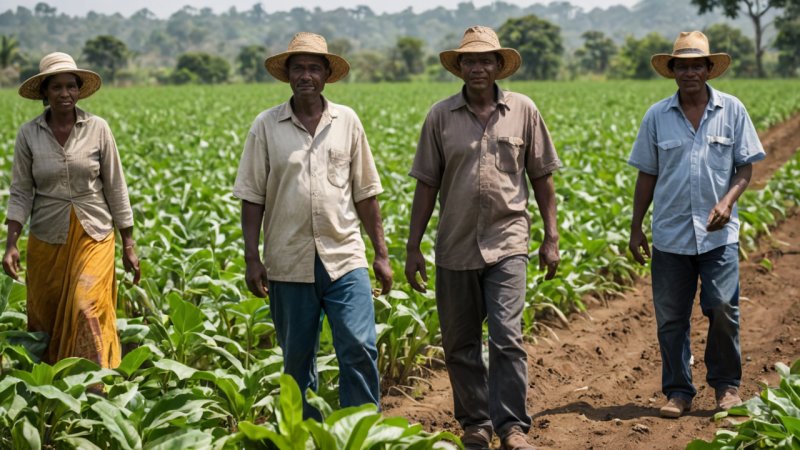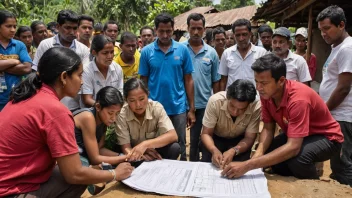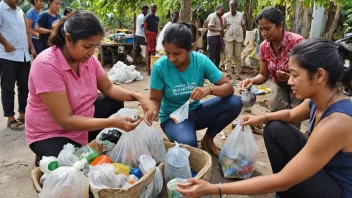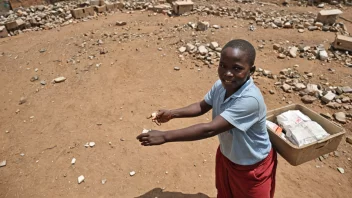In an era marked by rapid industrialization and urban expansion, the relationship between environmental sustainability and poverty reduction has emerged as a critical area of concern for policymakers, activists, and communities alike. The degradation of our natural environment not only threatens the planet's ecological balance but also exacerbates the plight of the world's most vulnerable populations. This article explores the intricate connections between environmental sustainability and poverty alleviation, highlighting the urgent need for integrated approaches that address both issues simultaneously.
The Current State of Environmental Degradation
Environmental degradation encompasses a range of issues including deforestation, pollution, climate change, and loss of biodiversity. According to the United Nations, over 2 billion people currently live in countries facing high water stress, while nearly 1 billion lack access to safe drinking water. Furthermore, the impacts of climate change are disproportionately felt by low-income communities, who often lack the resources to adapt to changing conditions.
Climate Change and Its Impact on Vulnerable Populations
Climate change serves as a catalyst for various environmental crises, including extreme weather events, rising sea levels, and shifting agricultural patterns. These changes threaten food security, access to clean water, and overall health, particularly for communities already grappling with poverty. For instance, smallholder farmers in developing countries are often the first to feel the effects of climate variability, leading to crop failures and economic instability.
The Link Between Poverty and Environmental Degradation
Poverty and environmental degradation are often interlinked in a vicious cycle. Poor communities frequently depend on natural resources for their livelihoods, yet their lack of access to sustainable practices leads to overexploitation and further degradation. For example, deforestation for agricultural expansion can lead to soil erosion, which diminishes land productivity and exacerbates poverty.
Resource Dependence and Unsustainable Practices
Many impoverished communities rely heavily on natural resources, such as forests and fisheries, for their daily sustenance. However, without proper management and sustainable practices, these resources are depleted, leaving communities vulnerable. The need for immediate survival often overshadows long-term sustainability, creating a paradox where poverty drives environmental harm, which in turn perpetuates poverty.
Strategies for Integrating Environmental Sustainability and Poverty Reduction
Addressing the interconnection between environmental sustainability and poverty alleviation requires a multifaceted approach. Here are several key strategies that can be employed:
1. Promoting Sustainable Agricultural Practices
Transitioning to sustainable agriculture is essential for reducing poverty while preserving the environment. Techniques such as agroecology, permaculture, and organic farming can enhance food security and restore degraded lands. These practices not only improve yields but also promote biodiversity and resilience to climate change.
2. Investing in Renewable Energy
Access to clean energy is crucial for both poverty reduction and environmental sustainability. Investing in renewable energy sources, such as solar, wind, and hydroelectric power, can provide affordable and sustainable energy solutions for impoverished communities. Microgrid systems and community-based energy projects can empower local populations while reducing reliance on fossil fuels.
3. Enhancing Education and Awareness
Education plays a pivotal role in fostering a culture of sustainability. By raising awareness about the importance of environmental stewardship and providing training on sustainable practices, communities can be empowered to make informed decisions that benefit both their livelihoods and the planet.
4. Strengthening Community Resilience
Building resilience in vulnerable communities is essential for adapting to environmental changes. This can be achieved through initiatives such as disaster preparedness programs, access to financial services, and support for local governance. Empowering communities to advocate for their rights and participate in decision-making processes can lead to more sustainable outcomes.
Case Studies: Successful Integrations of Sustainability and Poverty Alleviation
Several initiatives worldwide exemplify the successful integration of environmental sustainability and poverty reduction:
1. The Green Belt Movement in Kenya
Founded by Nobel Laureate Wangari Maathai, the Green Belt Movement focuses on tree planting as a means to combat deforestation while empowering women. This initiative has not only contributed to environmental restoration but has also provided women with income-generating opportunities and improved their social status.
2. The Barefoot College in India
The Barefoot College trains rural women to become solar engineers, enabling them to install and maintain solar energy systems in their communities. This initiative not only provides access to renewable energy but also helps uplift women economically and socially.
Challenges and the Way Forward
Despite the clear connections between environmental sustainability and poverty alleviation, numerous challenges persist. Political will, funding, and public awareness are often lacking. Additionally, systemic issues such as inequality and lack of access to resources hinder progress. To overcome these challenges, a collaborative approach involving governments, NGOs, and the private sector is essential.
Advocating for Policy Changes
Policymakers must prioritize environmental sustainability in poverty reduction strategies. This includes integrating environmental assessments into development plans and ensuring that marginalized communities have a voice in decision-making processes. Policies that incentivize sustainable practices and penalize environmentally harmful behaviors can create a more equitable framework.
Fostering Global Partnerships
International cooperation is vital for addressing global challenges. By sharing knowledge, resources, and technologies, countries can work together to create sustainable solutions that benefit both the environment and impoverished communities. Initiatives such as the United Nations Sustainable Development Goals (SDGs) provide a framework for collaboration.
Conclusion
The relationship between environmental sustainability and poverty reduction is complex and multifaceted, yet it is clear that addressing these issues in tandem is essential for creating a more just and equitable world. By promoting sustainable practices, investing in renewable energy, enhancing education, and strengthening community resilience, we can break the cycle of poverty and environmental degradation. Collective action, informed policy, and global partnerships will be crucial in forging a path toward a sustainable future where both people and the planet can thrive.






